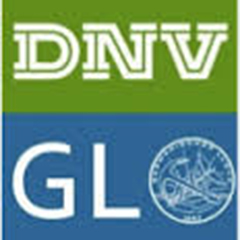* Testing for Low Voltage Ride Through (LVRT) provides transmission network operators and wind turbine manufacturers with reliable voltage dip capability results.
* DNV GL launches accredited LVRT testing services in India during Windergy 2017.
* DNV GL responds to recent grid code requirements issued by the Central Electricity Regulatory Commission (CERC).
New Delhi, India (26 April 2017) Today during Windergy 2017 DNV GL, the world’s largest resource of independent energy experts and certification body has officially launched their full suite of LVRT Testing services for the Indian wind market to support grid stability and improve security of supply.
The goverment of India has ambitious plans to achieve 175 gigawatts (GW) of renewable capacity by 2022, 60 GW being in wind energy, to compliment it’s growth plans.
Whilst wind energy becomes more of an integral part of the Indian power system, operators of transmission networks have added more stringent requirements for grid connected wind turbines. The main challenges are the Low Voltage Ride Through (LVRT) capability, the reactive power demand during these voltage dips, and the power recovery after the voltage dip. The LVRT test provides transmisdnvsion network operators and wind turbine manufacturers with reliable voltage dip capability results.
As India aims high to broaden their renewable energy capacity and takes more stringent measures to improve the quality, DNV GL launches its LVRT testing services, following up with the Central Electricity Regulatory Commission’s (CERC)
mandate to make these tests grid compliant for all operating wind turbines.
DNV GL with decades of international accredited measurement experience will now offer a full suite of LVRT Testing services in India, with respect to container design and build, scheduling, forecasting, demand estimation, contingency plans and protection system. This is not limited to other testing services DNV GL can provide like Power Performance Management, Power Quality and Acoustic measurements.
Mathias Steck, Executive Vice President Asia Pacific, DNV GL – Energy comments, “I am very pleased to see that India is finally making these tests mandatory. With the welcome and ambitious renewable energy targets the current Indian government has set this is an absolute must to ensure grid stability.”
After successfully commissioning 20,000 LVRT tests on 50 different wind turbines being operated worldwide, and leveraging over 20 years of operating experience in India, DNV GL aims to now support the growing demand for accredited testing services.
About DNV GL
Driven by its purpose of safeguarding life, property and the environment, DNV GL enables organisations to advance the safety and sustainability of their business. DNV GL provides classification and technical assurance along with software and independent expert advisory services to the maritime, oil & gas and energy industries. It also provides certification services to customers across a wide range of industries. DNV GL, whose origins go back to 1864, operates globally in more than 100 countries with its 16,000 professionals dedicated to helping their customers make the world safer, smarter and greener.
DNV GL in the Energy industry
In DNV GL we unite the strengths of DNV, KEMA, Garrad Hassan, and GL Renewables Certification. DNV GL’s 2,500 energy experts support customers around the globe in delivering a safe, reliable, efficient, and sustainable energy supply. We deliver world-renowned testing, certification and advisory services to the energy value chain including renewables and energy efficiency. Our expertise spans onshore and offshore wind power, solar, conventional generation, transmission and distribution, smart grids, and sustainable energy use, as well as energy markets and regulations. Our testing, certification and advisory services are delivered independent from each other.
Learn more at www.dnvgl.com/energy


























